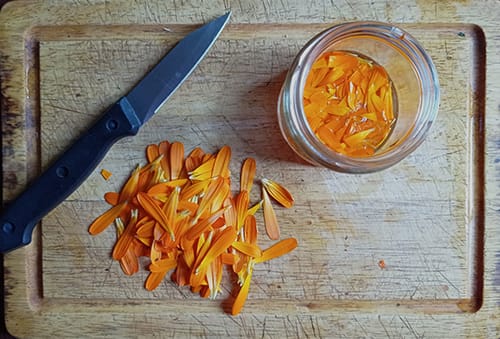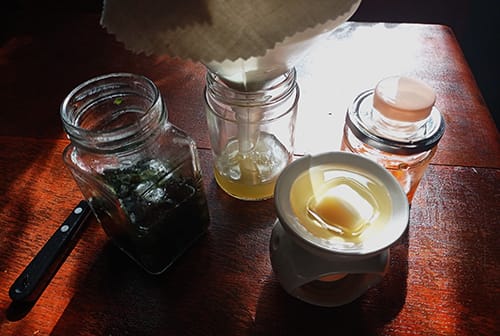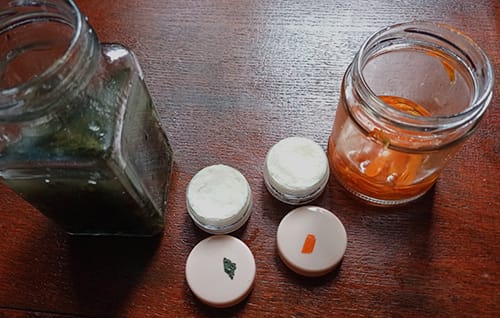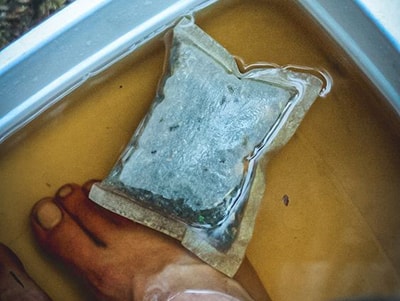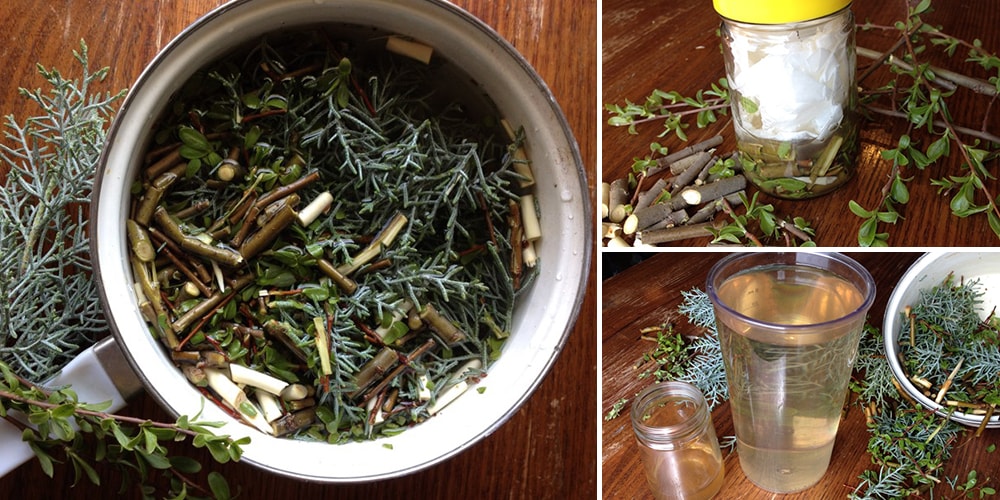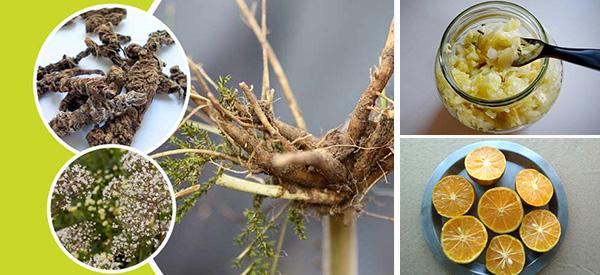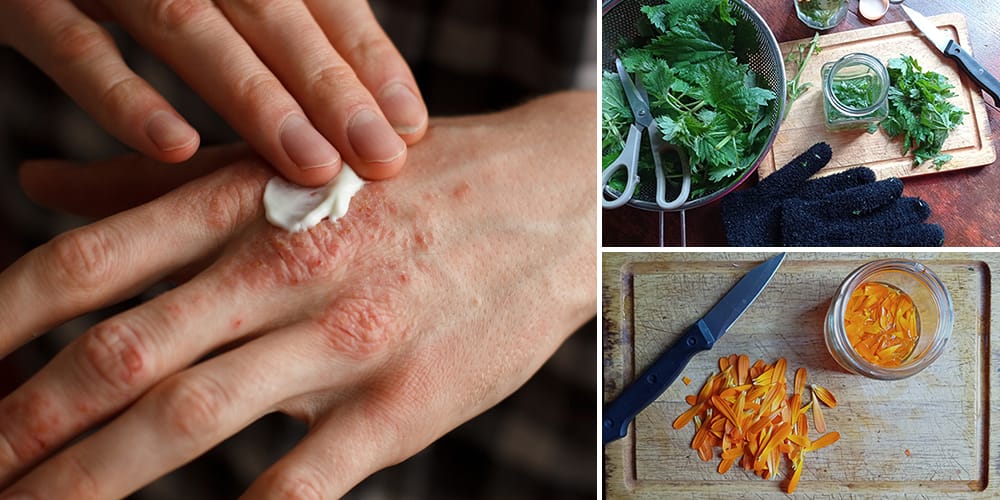
Homemade Herbal Rub for Eczema & Psoriasis
Most people remember being painfully stung by a nettle leaf in childhood, but did you know that this “weed” has been shown to offer benefits when used as a remedy too?
This post shows you how to make a rubbing ointment using nettle leaves and calendula petals to soothe itchy or sore skin caused by eczema and psoriasis.
Eczema vs Psoriasis
Eczema is an allergic skin condition that may cause painful itching, a burning feeling on the skin, redness, and cracked, dry-looking skin with blisters. People prone to hay fever and other allergies may also have eczema and if either of your parents has it, you are more likely to suffer from it too.
Psoriasis often affects particular areas of skin including the scalp, elbows, knees, or the body. It is a chronic autoimmune condition characterized by the rapid overproduction of skin cells, leading to thick, red, scaly patches on the skin’s surface. It is a non-contagious disease that can cause itching, pain, and discomfort, and often involves periods of flare-ups and remissions.
Benefits of Each Ingredient
Stinging Nettles (Urtica dioica) are painful directly on the skin but extracting goodness from the leaves in a carrier oil offers eczema and psoriasis sufferers a range of benefits including a soothing action, reducing inflammation and redness, and as a natural antihistamine to soothe allergies and promote faster skin healing.
However, it can cause irritation when applied topically to very sensitive skin, so make sure to test it on a small patch of skin beforehand.
Nettle leaves are packed with useful vitamins and minerals such as vitamin K, boron, calcium, iron, magnesium, and zinc so use any leftovers in tea. Traditionally, nettles were used to speed up recovery from infections of the urinary system.
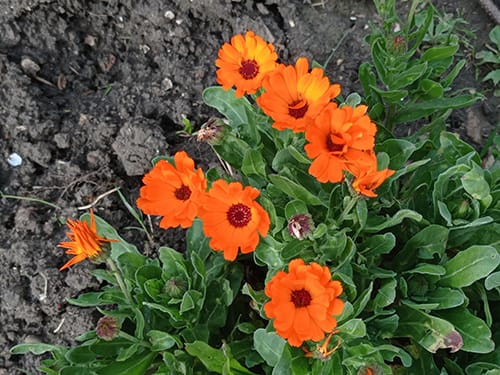 Calendula (Calendula Officinalis) petals are used by herbalists for eye infections, soothing skin conditions, and general wound healing. Sometimes confused with marigolds, look for bright orange flowers, with long petals with rounded ends. They have antibacterial and anti-inflammatory properties, contain flavonoids, and are edible. Calendula oil is made by soaking petals in your selected oil.
Calendula (Calendula Officinalis) petals are used by herbalists for eye infections, soothing skin conditions, and general wound healing. Sometimes confused with marigolds, look for bright orange flowers, with long petals with rounded ends. They have antibacterial and anti-inflammatory properties, contain flavonoids, and are edible. Calendula oil is made by soaking petals in your selected oil.
Calendula really is a heal-all plant when it comes to any type of skin issues. To soothe my eczema rash, I bought these seeds to grow my own plant. Now I can harvest fresh flowers and prepare home remedies often.
Almond Oil is often used as a base oil for herbal and tonic treatments because of its non-allergenic nature, gentle scent, and moisturizing abilities. You can use olive or sunflower oil if you prefer but I recommend almond for anybody with allergies. If you are prone to eczema or psoriasis, it is best to make fresh oil every 2-3 months.
Natural beeswax is a good choice for turning your oils into a salve. If like me, you do not have bees at home, you can buy beeswax as blocks or pellets, and melt it down to make your rub, while also adding a great scent.
This Psoriasis and Eczema Protocol from The Holistic Guide to Wellness: Herbal Protocols for Common Ailments is also extremely useful. It contains instructions on how to prepare the most suitable herbal remedies, baths, topical treatments and more. It also provides detailed information on the appropriate diet, vitamins, supplements and other helpful tips & tricks for keeping psoriasis and eczema at bay.
Homemade Herbal Rub for Eczema & Psoriasis
This is what you need for 2 small pots of rub, but you can adjust the quantities if you wish to make a larger batch. However, I recommend to dry the herbs first if you want to make a big batch.
Ingredients:
- 1-2 cups of freshly-cut Stinging Nettles (⅓ – ⅔ cup dried)
- 1 cup of freshly picked Calendula (⅓ cup dried)
- 4 tablespoons of Almond Oil, enough to cover the Nettles in one container; and 2 tablespoons of oil to cover the Calendula petals in the other
- ¼ oz (1 tablespoon) beeswax (pellets or blocks); 1.5 teaspoons for each small pot
You will also need:
- 2 small jars with lids to make the Nettle and Calendula oils separately
- A tea-light burner with a mixing section, or a saucepan with a bowl to heat the beeswax
- Scissors, a sharp knife, and a chopping board
- A funnel and some gauze/strainer to strain the plants from the oil
- 2 small clean containers with lids to store the rubbing ointment
How to Make it
First extract the goodness from leaves and petals in the oil, followed by melting the wax, adding the strained oil, and then storing the ointment in suitable containers. I made double quantities of Nettle oil to store some for future use.
- Wear gloves or you may get stung! Pick young, fresh leaves; they are usually bright green this time of the year. Until the nettles go to seed, you can continue picking them. Shake the stem to encourage any bugs to leave naturally, then a gentle washing will remove any dirt. Let them to dry for a few hours.
- Chop the leaves into smaller pieces while still wearing gloves, because they may sting. Place these in a clean jar, cover the leaves with almond oil, and shake gently. Place on a sunny windowsill for a week, rotating the mix each day.
 Pick a handful of Calendula flowers and remove the petals. You can cut them on a wooden chopping board or cut them into smaller pieces directly into the clean jar. Add enough oil to cover them, approximately 1-2 tablespoons of oil should be enough. Stir well, put the lid on the jar, and leave the goodness to infuse into the oil for a week.
Pick a handful of Calendula flowers and remove the petals. You can cut them on a wooden chopping board or cut them into smaller pieces directly into the clean jar. Add enough oil to cover them, approximately 1-2 tablespoons of oil should be enough. Stir well, put the lid on the jar, and leave the goodness to infuse into the oil for a week.
- Gently rotate the mixtures in the jars every day to allow the goodness from leaves and petals to infuse the oils. The color of the Nettle oil will change slowly to a yellowy-green shade and the Calendula may become more amber-colored. This is normal so don’t worry.
- Clean and sterilize your ointment container(s) before adding the mixture.
- Strain approximately 2 teaspoons of both oils into a clean jar, using a funnel and set this aside. If making large quantities, strain 2 teaspoons of oil for each pot. I used small ointment containers and stored the excess oil for later use.
- Place the beeswax on top of the tea-light burner or heat it slowly in a bowl placed over a saucepan of boiling water. Allow the wax to melt until it is soft. It will be easy to mix into ointment now.

- Turn off the heat, transfer to a bowl and add 2 teaspoons of saved oil, and stir briskly before the liquid sets. Do not add the oil mixture all at once! Add it teaspoon by teaspoon, stirring as you do to make a smooth mixture with no lumps. Then add the other oil and keep stirring. It should now have a thick consistency and look creamy or slightly green in tone.
- While it is still warm and soft, use the spoon to transfer it to the container(s) and allow it to cool. Cover the container with the lid and label it with the date you made it.

How to Use and Store
Before using this remedy I advise doing a skin test first by spreading a little almond oil on the skin. For anybody with eczema or psoriasis, this is essential to make sure you do not react badly to the ingredients.
If the almond oil is ok, try a tiny amount of the nettle oil the next day. Wait another day and if no reaction, then try the calendula oil. If no rash or reaction occurs, then it is safe to use.
Wash your hands first, then spread a pea-shaped amount on the affected area and rub it in gently. If difficult to access, ask somebody to help rub it in well.
Like all remedies, avoid if pregnant or breastfeeding, if you are allergic to daisies or asters, and if taking medication, check with your physician first.
Store the rubbing ointment in a sealed container, and keep it out of direct sunlight in your first aid kit. It will store well for 2-3 months. To keep the potency it is best to make new salves every 3-6 months. Refrigeration can help extend their shelf life by slowing down the degradation of the ingredients and preventing the growth of bacteria and mold.
Nicole’s Apothecary also has an already-made All-Purpose Salve, which you can use for everything from cuts and stings, to eczema and rashes.
Tips
Only use small quantities of plant material and if unused, make teas. If you want to make a larger batch of salves, I recommend using dried herbs instead, because fresh plants tend to develop mold.
Any nettle leftovers can be dried for tea or eaten like spinach. You can store any excess Nettle or Calendula oil in the refrigerator, to use directly on your skin in an emergency.








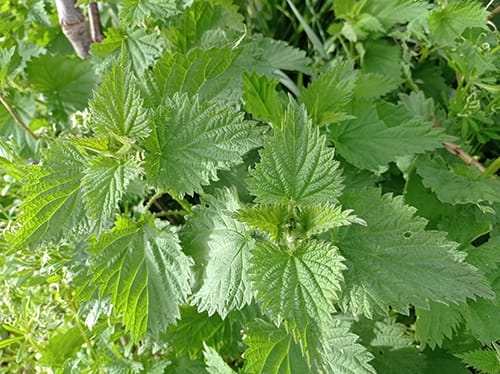
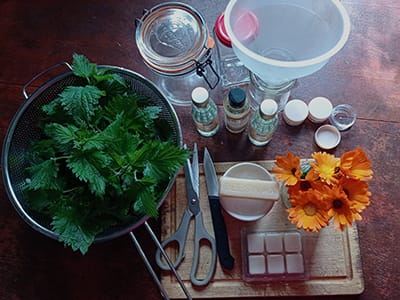
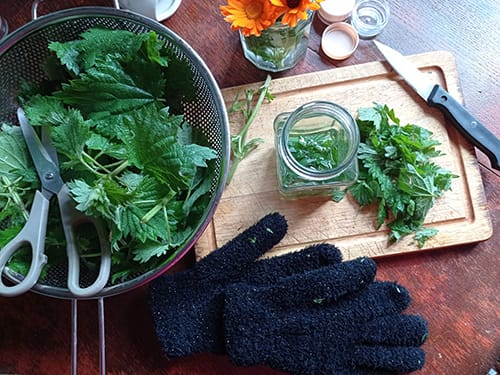 Pick a handful of Calendula flowers and remove the petals. You can cut them on a wooden chopping board or cut them into smaller pieces directly into the clean jar. Add enough oil to cover them, approximately 1-2 tablespoons of oil should be enough. Stir well, put the lid on the jar, and leave the goodness to infuse into the oil for a week.
Pick a handful of Calendula flowers and remove the petals. You can cut them on a wooden chopping board or cut them into smaller pieces directly into the clean jar. Add enough oil to cover them, approximately 1-2 tablespoons of oil should be enough. Stir well, put the lid on the jar, and leave the goodness to infuse into the oil for a week.